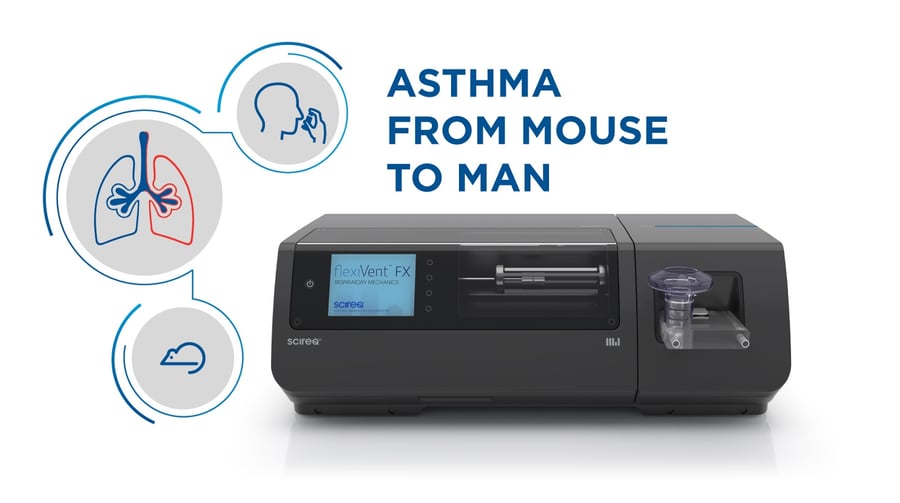
“The assessment of lung function endpoints used in preclinical drug testing may hold the key to translation of drug efficacy from mouse to man1.”
Bench-to-bedside
Mouse models have been and continue to be of invaluable importance in asthma research, for the elucidation of key disease pathways as well as in the assessment of potential therapies2. While therapeutic candidates showing promise in murine models have not always translated into clinical successes, the story behind the FDA-approved anti-IL-5 and anti-IL-13 therapies3, previously deemed ineffective in general asthmatic populations, is a compelling example of how a better understanding of both the underlying disease mechanisms and the models resulted into “bench-to-bedside” achievements.
Mouse models of asthma
Asthma is a complex heterogeneous disease whose features have not been completely depicted by any single mouse disease model. In preclinical (in vivo) research, careful considerations should be given to the model employed, its phenotype, as well as the measured outcomes. Ideally, studies should include outcomes with strong predictive or translational value such as lung function measurements. Respiratory function outcomes are often considered as primary study endpoint in many clinical trials targeting asthma patients. Therefore, relying on robust lung function measurements early on in the preclinical validation and development of potential disease targets and therapeutic candidates can, not only avoid misleading assessments, but also provide a grounded approach to support the critical program decision-making process.
Lung function outcomes
Lung function outcomes provided by SCIREQ‘s flexiVent and plethysmography methodologies aim to bridge the gap between mouse and man. Referenced in thousands of peer-reviewed scientific publications and patents4, our scientific instruments permit accurate and detailed measurements to complement and strengthen biochemistry or immunology data. These measurements are conveniently combined into a robust and comprehensive pulmonary assessment, collected via a computer-controlled instrument that also maximizes reproducibility. Further details may be found in our overview of Airway Hyperresponsiveness, a defining feature of Asthma.
Future direction
Mouse models represent a highly valuable tool to study the mechanisms involved in asthma and extrapolate scientific discoveries to humans. The translatability of the information provided will only be ensured in the future by the continuous refinement of the models employed, as well as by a holistic approach combining lung mechanics data to a comprehensive assessment of the model phenotype. This rigorous approach will hopefully help identify target populations and lead to additional success stories in the clinic, benefiting asthma patients worldwide.
Relevant links:
1Predicting Drug Efficacy Using Integrative Models for Chronic Respiratory
2Mouse models of asthma
3Animal Models of Allergic Airways Disease: Where Are We and Where to Next?
4SCIREQ flexiVent - published literature
JoVE Video – Lung function measurements with the flexiVent
